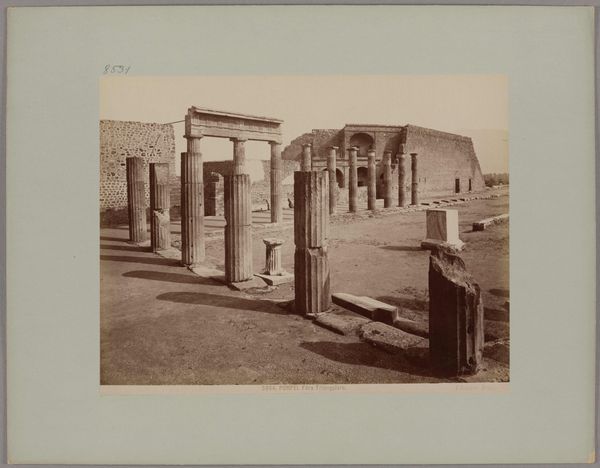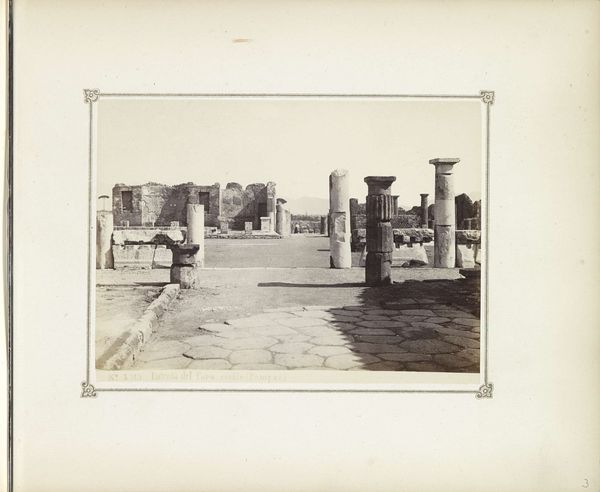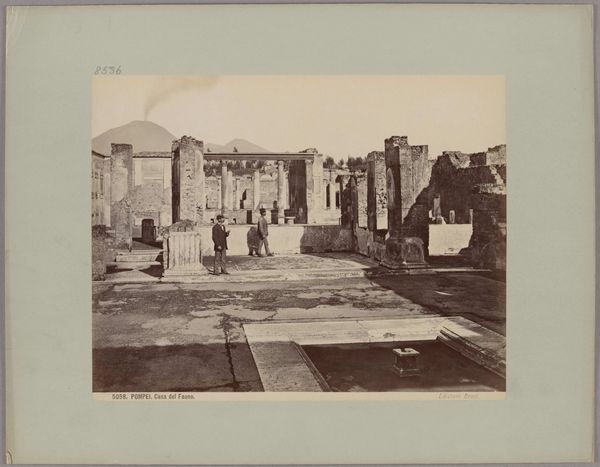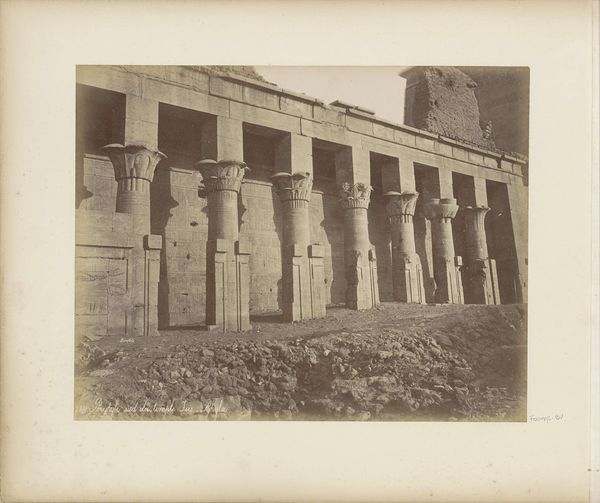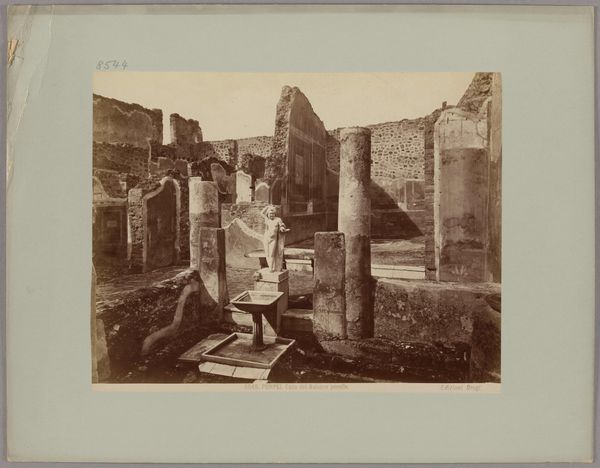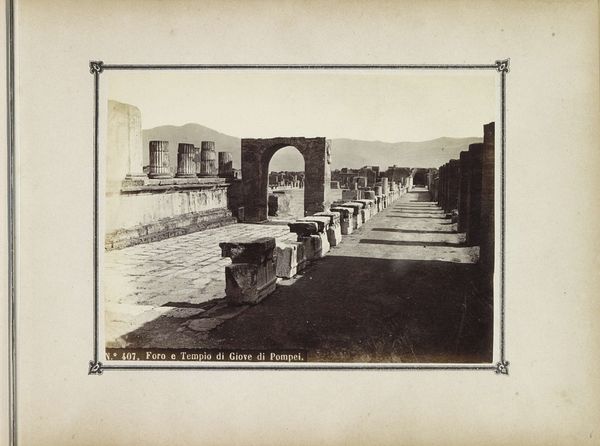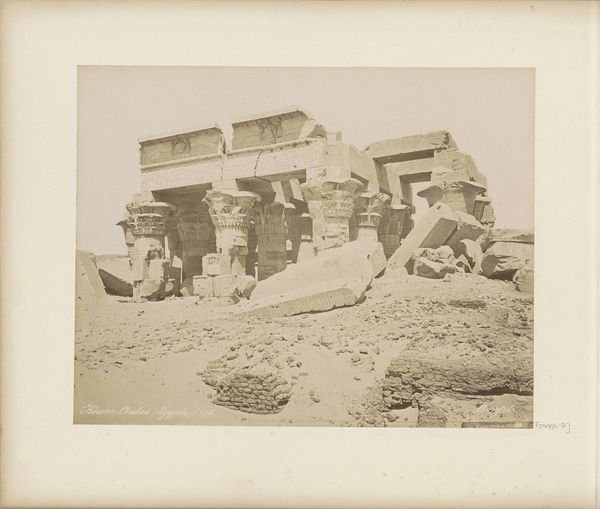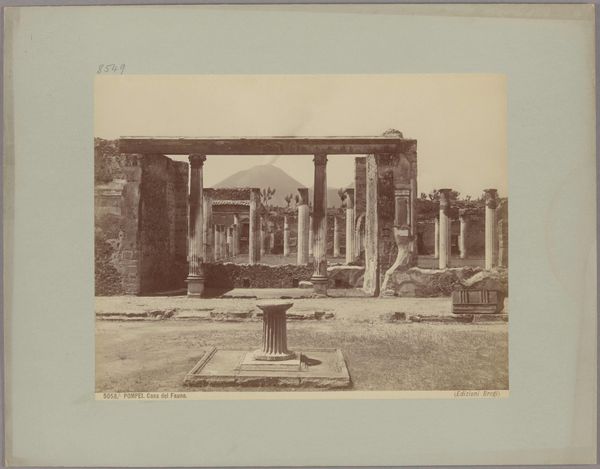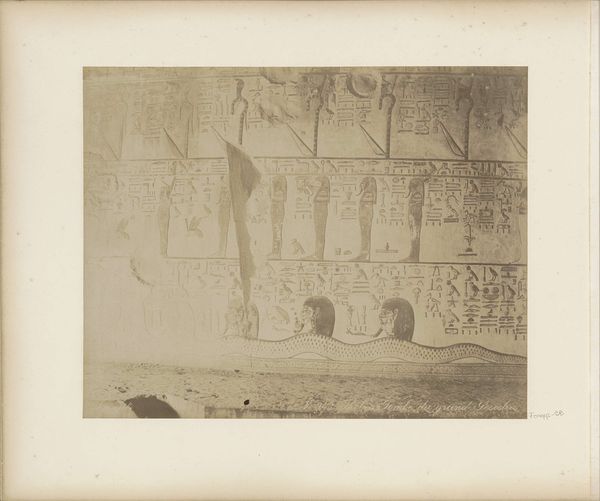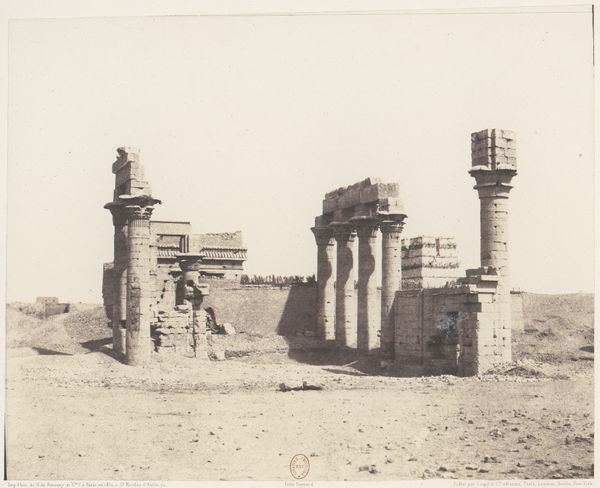
Pompeii_ Temple of the Genius of Augustus, called Mercury, No. 5028 c. 1870 - 1880
0:00
0:00
albumen-print, paper, photography, albumen-print, architecture
#
albumen-print
#
16_19th-century
#
landscape
#
paper
#
photography
#
ancient-mediterranean
#
albumen-print
#
architecture
Copyright: Public Domain
Curator: Giacomo Brogi captured this albumen print between 1870 and 1880. Titled "Pompeii, Temple of the Genius of Augustus, called Mercury, No. 5028", it presents an image of the archeological site. Editor: My first impression is the density of forms; there's a layered effect of ruins juxtaposed with the artist’s rendering. It’s really a complex orchestration of textures and tonal gradations. Curator: Exactly! Look closer, and one finds more than an architectural scene. This piece emerged at a crucial time of nationalism and imperialism, when visual documentations of newly discovered historical sites played a central role in shaping narratives around Western identity and power. The romanticizing of Pompeii—a civilization destroyed—functions as a symbolic subjugation of "others". Editor: That's interesting. But on its own merits, note the superb visual structure here: the clear recession of space, and the carefully articulated arrangement of architectural elements lead your eye. Curator: What I find compelling is that the subjects are essentially copies of the past - reproduced objects. How do these ruins become stand-ins for the cultural narratives and socio-political dominance, specifically when seen through the lens of photographic documentation? The Temple, even in ruins, is implicitly a symbol of the Augustan ambition, resurrected through archaeological activity. Editor: True. But this is skillfully managed in its photographic representation. The light seems to pick out a certain rhythm among the repetitive architectural details – friezes, plinths, all leading the eye toward the deeper structures, where we sense a profound depth of perspective. Brogi has very consciously structured the composition to emphasize not only architectural relics but their geometrical harmony, their organization into meaningful, structured elements. Curator: Ultimately, photographs like these participated in broader projects of nation-building, colonialism, and class consolidation. Brogi's "Pompeii" does more than record a place; it quietly yet effectively advances a claim over heritage and history itself. Editor: Well, when viewed purely as a play of photographic and compositional devices, it’s hard to deny its brilliance. Curator: But understanding what those "devices" amplified about society, is critical to the artwork's meaning. Editor: A balancing act we engage with through art, perpetually.
Comments
No comments
Be the first to comment and join the conversation on the ultimate creative platform.

